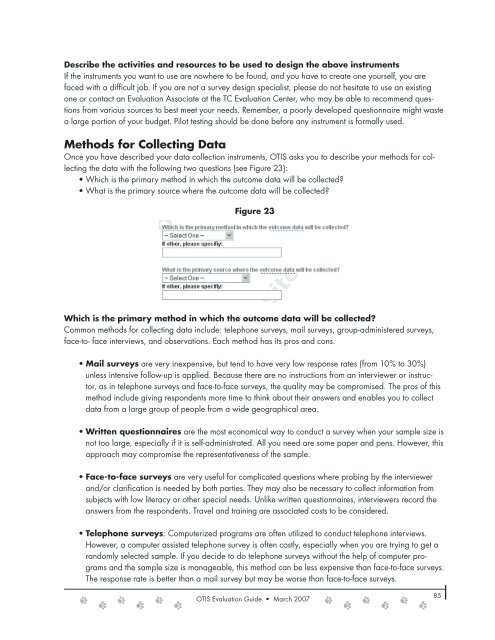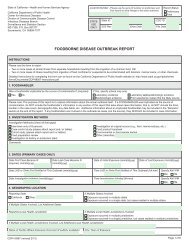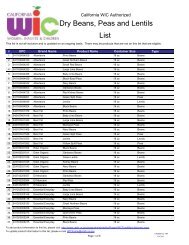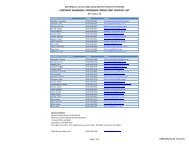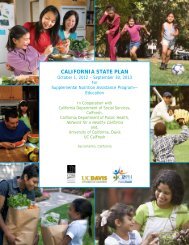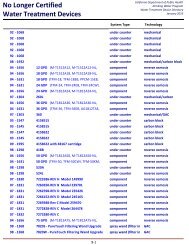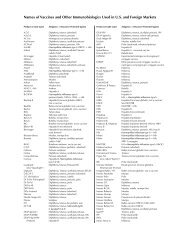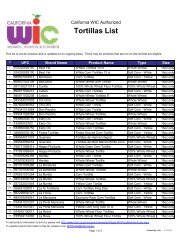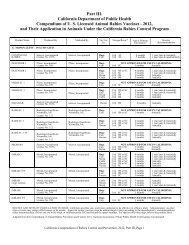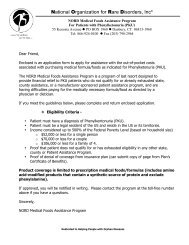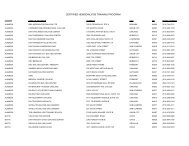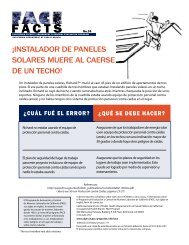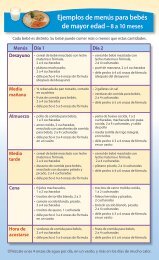OTIS Evaluation Guide (PDF) - California Department of Public Health
OTIS Evaluation Guide (PDF) - California Department of Public Health
OTIS Evaluation Guide (PDF) - California Department of Public Health
You also want an ePaper? Increase the reach of your titles
YUMPU automatically turns print PDFs into web optimized ePapers that Google loves.
Describe the activities and resources to be used to design the above instruments<br />
If the instruments you want to use are nowhere to be found, and you have to create one yourself, you are<br />
faced with a difficult job. If you are not a survey design specialist, please do not hesitate to use an existing<br />
one or contact an <strong>Evaluation</strong> Associate at the TC <strong>Evaluation</strong> Center, who may be able to recommend questions<br />
from various sources to best meet your needs. Remember, a poorly developed questionnaire might waste<br />
a large portion <strong>of</strong> your budget. Pilot testing should be done before any instrument is formally used.<br />
Methods for Collecting Data<br />
Once you have described your data collection instruments, <strong>OTIS</strong> asks you to describe your methods for collecting<br />
the data with the following two questions (see Figure 23):<br />
• Which is the primary method in which the outcome data will be collected?<br />
• What is the primary source where the outcome data will be collected?<br />
Figure 23<br />
Which is the primary method in which the outcome data will be collected?<br />
Common methods for collecting data include: telephone surveys, mail surveys, group-administered surveys,<br />
face-to- face interviews, and observations. Each method has its pros and cons.<br />
• Mail surveys are very inexpensive, but tend to have very low response rates (from 10% to 30%)<br />
unless intensive follow-up is applied. Because there are no instructions from an interviewer or instructor,<br />
as in telephone surveys and face-to-face surveys, the quality may be compromised. The pros <strong>of</strong> this<br />
method include giving respondents more time to think about their answers and enables you to collect<br />
data from a large group <strong>of</strong> people from a wide geographical area.<br />
• Written questionnaires are the most economical way to conduct a survey when your sample size is<br />
not too large, especially if it is self-administrated. All you need are some paper and pens. However, this<br />
approach may compromise the representativeness <strong>of</strong> the sample.<br />
• Face-to-face surveys are very useful for complicated questions where probing by the interviewer<br />
and/or clarification is needed by both parties. They may also be necessary to collect information from<br />
subjects with low literacy or other special needs. Unlike written questionnaires, interviewers record the<br />
answers from the respondents. Travel and training are associated costs to be considered.<br />
• Telephone surveys: Computerized programs are <strong>of</strong>ten utilized to conduct telephone interviews.<br />
However, a computer assisted telephone survey is <strong>of</strong>ten costly, especially when you are trying to get a<br />
randomly selected sample. If you decide to do telephone surveys without the help <strong>of</strong> computer programs<br />
and the sample size is manageable, this method can be less expensive than face-to-face surveys.<br />
The response rate is better than a mail survey but may be worse than face-to-face surveys.<br />
<strong>OTIS</strong> <strong>Evaluation</strong> <strong>Guide</strong> • March 2007<br />
85


